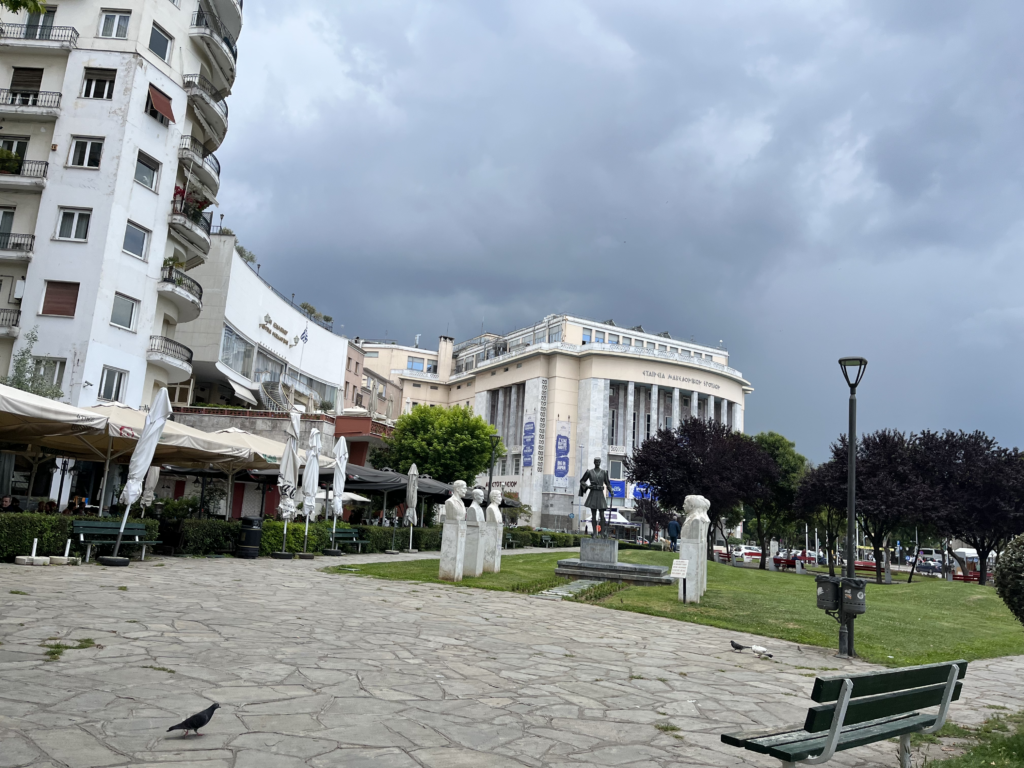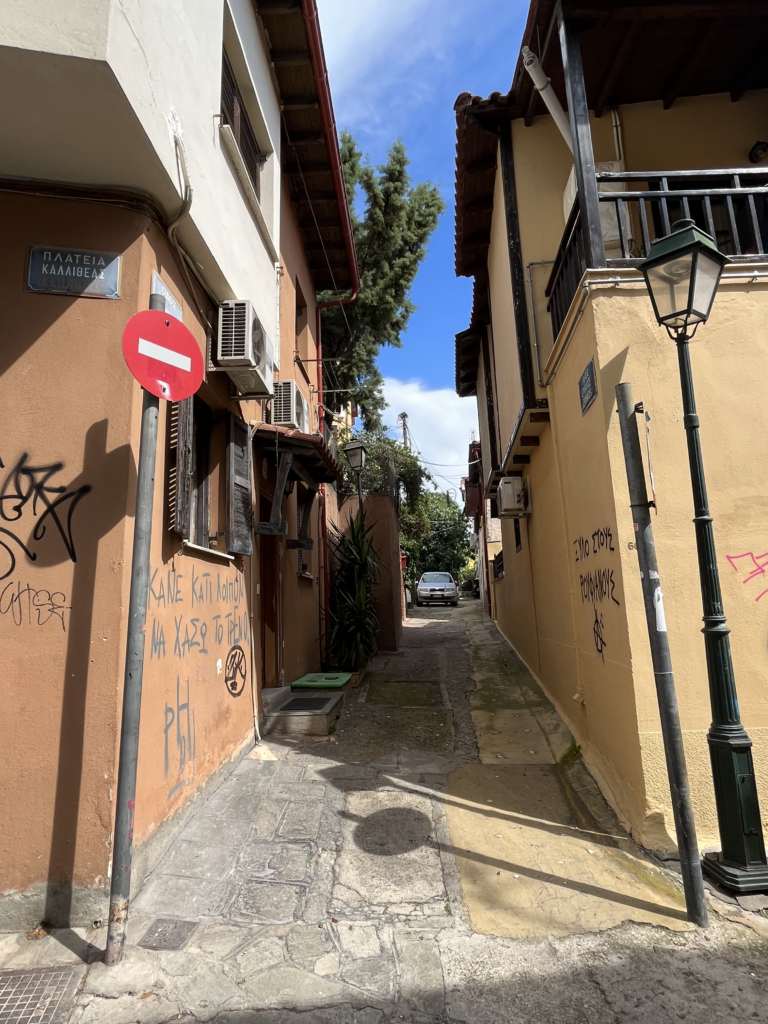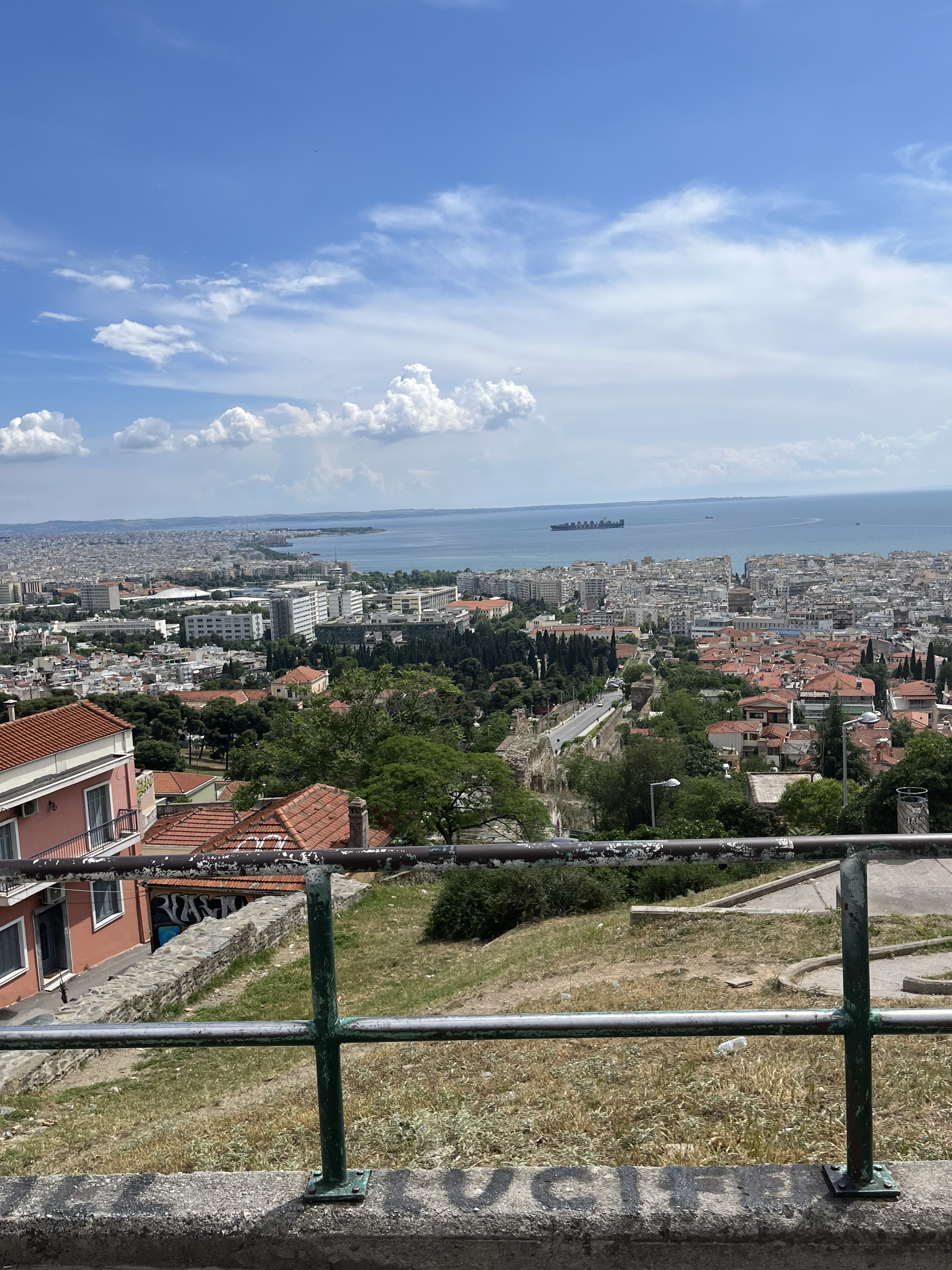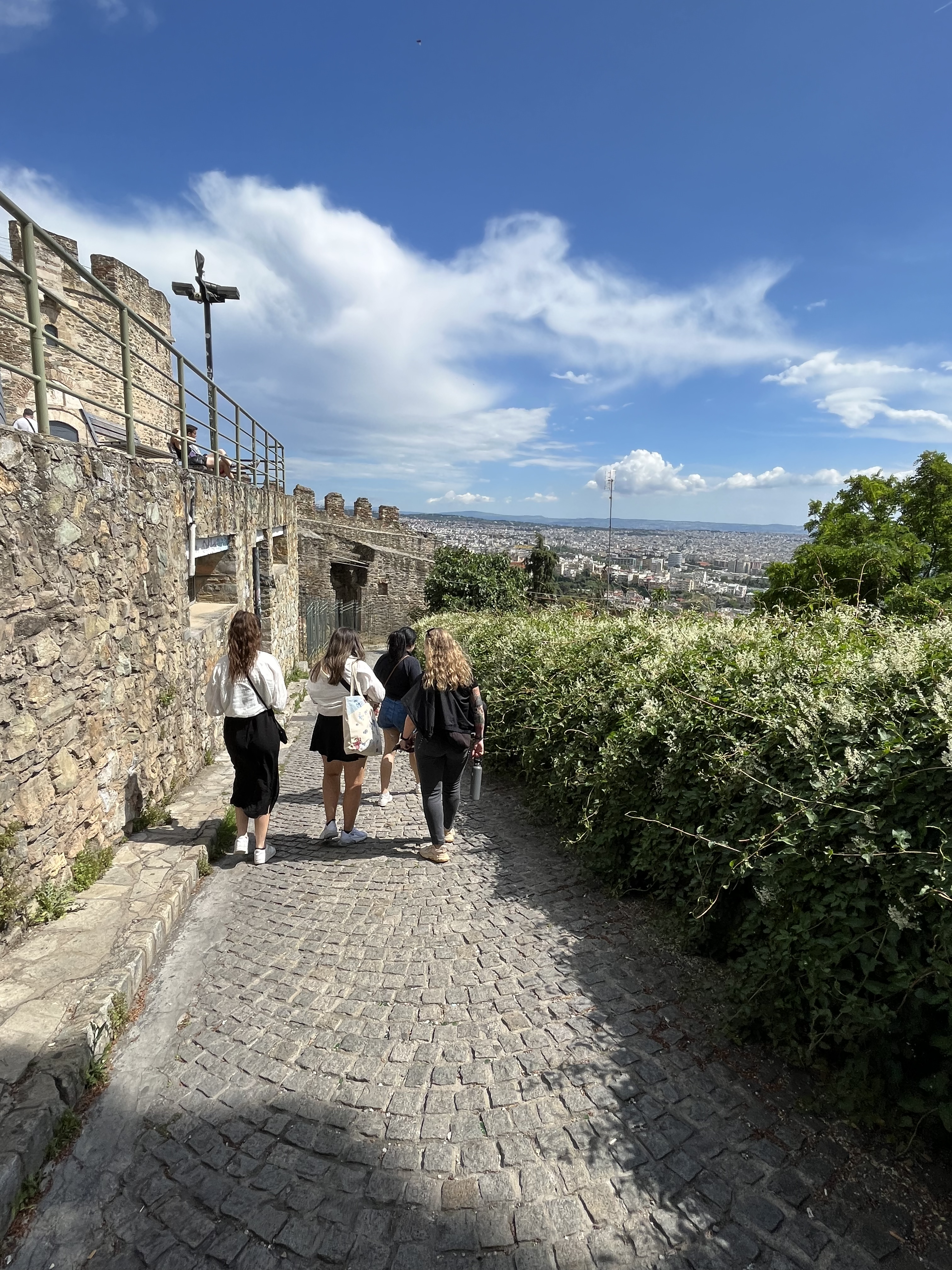
The structure of Thessaloniki became obvious to me on a hot summer day in May. My new group of friends and I started our walk through the city at a staple Arizona girl location – at the H&M and Zara in the part of town which functioned like an outdoor mall. Right by the water, the touristy lower city center was marked by straight roads laid out in a grid that were easy to follow, and filled with people and restaurants. The Aristotle square was filled with people eating from different shops which lined the center on a few sides, similar to an old Roman forum. While the sun was noticeably hot, we did our shopping by dodging into air-conditioned clothing stores and catching glimpses of the bay between every few streets kept us feeling cool.
As we climbed to the upper city to meet our class group, the difference in the layout of different parts of the city was gradually revealed to us. Although the shift to the upper city was slightly slow, it was very obvious. The hills got steeper, my legs got heavier, and I tied my denim jacket into a backpack on my back. The city took on a different character. The straight roads which had continued from the flat, grid system in the south of the city transitioned into steeper, more narrow roads, which twisted at all different angles off of the main street. Cars were no longer parked next to each other out into the street as they had been in the lower, southern part of the city near the water, but they still shared most of the street with the cars that darted quickly out from a hidden curved street, speeding downhill.

As we made our way up the steepening hill, we got slightly lost, several times. Not knowing where to look for signs in Greek, and the streets diverging into intersections of three or four streets at acute angles from each other, we would follow a direction on apple maps for a block or two up what was to me an alley-sized street until we realized that Apple had lost us among the buildings and the close-together streets, and had thought we were on a different street entirely. Pretty quickly, we stopped following the Apple Maps directions and instead chose to guess the general direction of our destination, and find our own paths up the hill — with fewer stairs.
After a second quick outfit change on the way up, we reached the top. Patting the sweat off our faces, we met the rest of our group. We bought hats and little bags in which to carry our new Zara clothing items we’d bought in the city-center to prepare for the route back down. As we began our descent, the view caught my eye first. After climbing through the winding streets of the upper city, I had completely lost track of the ocean as it was hidden behind the mix of buildings and twisting streets. We could see out of the mess of interwoven streets a clear straight path of view straight down to the ocean. It reminded me of the paths carved out of forests for power lines like I had seen in rural michigan, clear blank swaths of grass cutting paths through the mountains, but instead of trees it was the twisted groups of streets and buildings which lined the straight clear line of ruins and low streets to the ocean. Someone pointed out a possible Mount Olympus way off in the distance (which I really don’t think it was), and we noticed some ruins on the way – a big circular Byzantine white tower in the middle.
As we crossed over this clear outcropping of buildings and ruins, we saw a man perched on the edge of a hand railing, overlooking the city. We all looked at each other, and someone made a comment that he really wasn’t too worried about falling off what looked like a steep edge. As we walked past him, we gave him a wide berth and were pushed to the side down some old steps that looked like knotty bricks, overgrown with grass. As we walked down, he shifted away from us, moving to balance on the wall of some ancient Byzantine ruins, singing and dancing to himself as if he barely had known we were there.

A stark difference between the upper city and lower city center was the amount of privacy. One member of our group, who was perpetually concerned by the health of the stray animals around the city — she had taken photos of each as she passed — walked up to a porch to check if a cat sitting on it was alive, but she did not see that a woman in the window next to her was standing in shadow, staring. We all tried not to look at her, and urged our friend along, but at some point someone said something very loudly in Greek, and it very well could have been the woman or someone else from the neighborhood hiding on a porch or calling from their home. We felt uncomfortable, like we were all strangers walking through someone’s front yard. Which, essentially, we were. In such a crowded city, privacy was guarded by their glares, rather than by walls.
The difference between the upper and lower city was stark. The appearance of public space was much more intentional in the southern part of the city. In the upper city, we saw the man dancing to himself in the main preserved space of the upper city, the byzantine ruins. To return to the lower city, it felt impossible to not cut through neighborhoods and essentially peoples front yards. Bars and gathering spaces were on the roofs of the houses in the winding streets, and we did not really see much public space until we got down to the university below. The winding upper streets reflected the older section of the city, graffiti marked the modern people living within it, it was clear modernization had not been handled by the change of the city to the grid layout as happened in the South.
